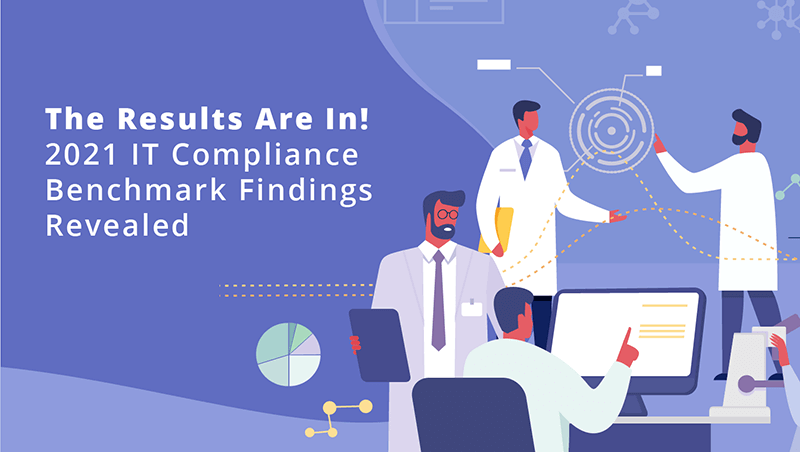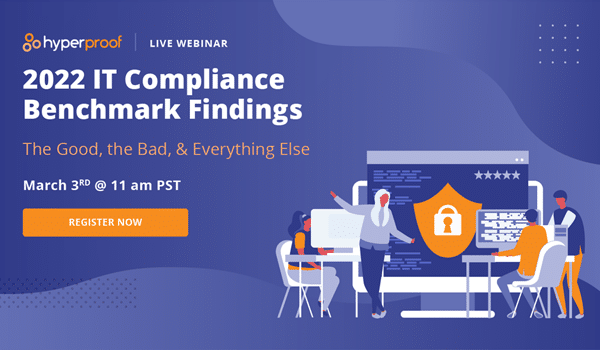Cost of Compliance Calculator
IT security and compliance professionals are spending an inordinate amount of time on compliance related tasks each year. And collecting and managing evidence files needed to demonstrate compliance and pass audits is taking the largest portion of that time.
In Hyperproof’s 2021 IT Compliance Benchmark Report, we found that the typical professional responsible for security, data privacy, and compliance initiatives spends approximately 50% of their total time at work on low-level administrative tasks.
Instead of focusing on activities that help to get a greater handle on the real risks — such as conducting risk assessments, updating security policies, and implementing applications to support a zero-trust approach to security — security and compliance professionals are spending their precious hours on tasks such as:
- Searching through emails to find documents needed for audits
- Finding information needed to meet compliance requirements
- Filing, storing, managing compliance documentation
This administrative overhead creates enormous opportunity costs for organizations. Every hour spent on administrative tasks is an hour not spent on other high-value tasks, such as:
- Investigating security alarms
- Updating security policies and procedures
- Implementing new tools that can better identify threats and prioritize their work
- Training employees to uplevel their cybersecurity knowledge
At an organizational level, these issues can result in consequences such as major risks being missed or vulnerabilities left unaddressed. Further, when compliance information is dispersed across different tools including individuals’ inboxes, the organization runs the risk of losing critical institutional knowledge when individuals leave the company.
In short, when an organization doesn’t have an efficient way to manage their compliance obligations, direct cost isn’t the only thing that goes up. The organization also inadvertently increases their risk exposure because its ability to respond quickly to emerging threats is compromised.
Sign up for a personalized demo of Hyperproof
How Much Does This Cost Organizations?
Each organization will incur a different cost, depending on the size and scale of their compliance programs, how many audits they must go through and the tools they’re using. To help organizations get a sense of how much they incur in administrative overhead, we’ve released a cost of compliance calculator.
Use it to see how much the administrative aspects of compliance are costing your organization.
How to Reduce the Costs of Compliance
1. Manage all compliance projects in a single place
The tools you use to manage your compliance projects can make a big difference. In Hyperproof’s 2020 IT Compliance Benchmark Report, we found that 57 percent of surveyed organizations are still using ad-hoc tools — a combination of spreadsheets, email, and file storage systems — to manage their audit and compliance-related workloads. These tools simply aren’t built to handle the work that has to be done by IT compliance managers.
Given the critical importance of IT security and data privacy, many compliance managers today are managing anywhere between five and ten IT compliance frameworks at once and must go through one or two external audits every month.
2. Identify redundant controls and consolidate them for efficiency
Various cybersecurity frameworks have overlapping requirements. For instance, although HIPAA only covers ePHI, the controls and safeguards required to protect ePHI are similar to those in other cybersecurity frameworks (e.g. SOC 2, ISO 27001) designed to protect other types of data. Access control, mobile device usage policies, risk management policies, and employee training are just a few examples of HIPAA compliance requirements that overlap with requirements in other data security frameworks.
If you know which requirements are quite similar across different frameworks or regulations, you can identify a single control that satisfies those requirements. You can then link all evidence for that single control once and that bucket of evidence would satisfy multiple requirements.
To consolidate your controls, you’ll need to know which requirements are similar in different standards and identify the common controls that satisfy the requirements. Then, you could upload evidence to the common controls, thus eliminating duplicative effort in uploading evidence.
Hyperproof Eliminates Administrative Overhead From Compliance Processes
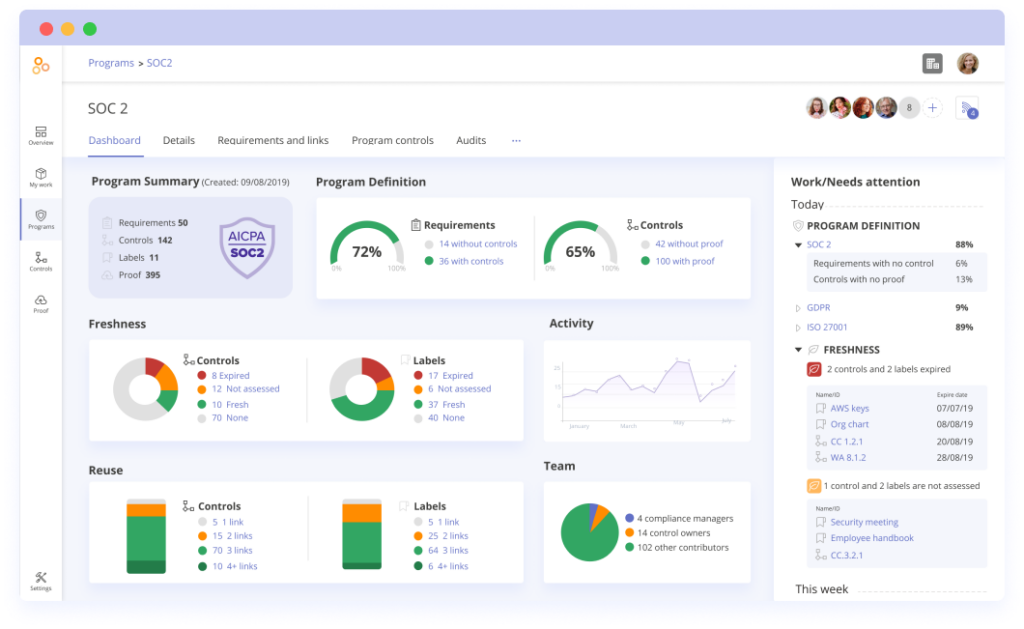
Collect Evidence Easily
Hyperproof can provide a single source of truth for all of your compliance projects. Instead of searching through different emails, file storage systems, and Slack messages to locate an evidence file, you can upload all of your evidence into Hyperproof, link evidence to controls across multiple programs and multiple requirements, and retrieve the right file instantaneously through search function.
Instead of asking a colleague in another department to provide the same piece of evidence three times a year for three different audits, you can ask for that evidence once, file it in Hyperproof, and be ready for future audits.
Instead of sending emails and manual calendar invites to your colleagues to remind them to review evidence or submit new evidence, you can use Hyperproof to set due dates and reminders on evidence files — so your colleagues are notified automatically when it’s time for them to review and submit fresh evidence.
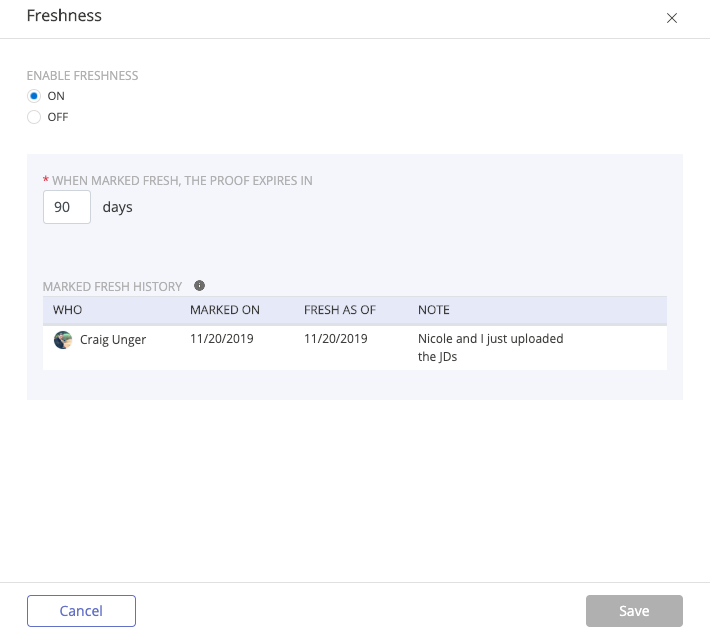
In Hyperproof, you can use labels to organize numerous pieces of evidence with the correct set of controls. These labels function in a similar way as labels in Gmail or tags in other software apps. This feature saves time, by eliminating the need to manually attach each piece of evidence to each control.
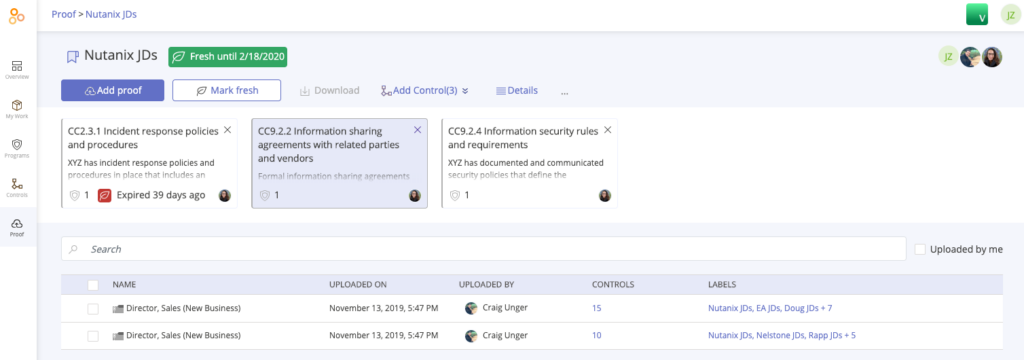
Use a label to group related evidence together
By using Hyperproof, you will have a record of all former audits, both internal and external.
Hyperproof captures metadata, so new employees (or someone new to a particular audit) can use that information to have an immediate impact on preparation activities. They will know where artifacts were sourced, when they were prepared for the last audit, and by whom. It will significantly reduce the amount of time and effort typically required in the course of an audit to collect all the necessary information.
“Hyperproof is dispensing with much of the administrative overhead necessary to begin providing metrics and valuable insight into our audit readiness – more of my time will be freed to work on strategic tasks aimed at improving the security and compliance posture of the organization. This time saving is a big deal because it allows us to more effectively scale with existing resources,” says Aaron Poulsen, Director of Product Security and Compliance at DigiCert.
Reuse controls and evidence across multiple frameworks
Utilizing a dedicated compliance software such as Hyperproof allows you to understand the overlap between control frameworks, map evidence to more than one control/requirement, re-use evidence from past audits and avoid duplicating efforts.
Sign up for a personalized demo of Hyperproof
See Hyperproof in Action
Related Resources
Ready to see
Hyperproof in action?






